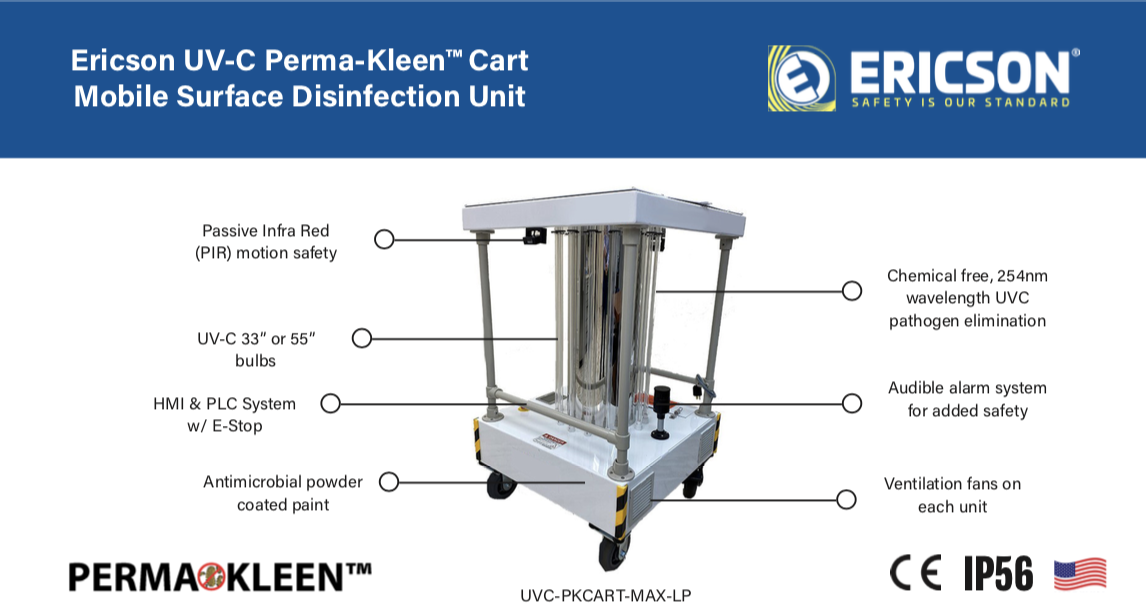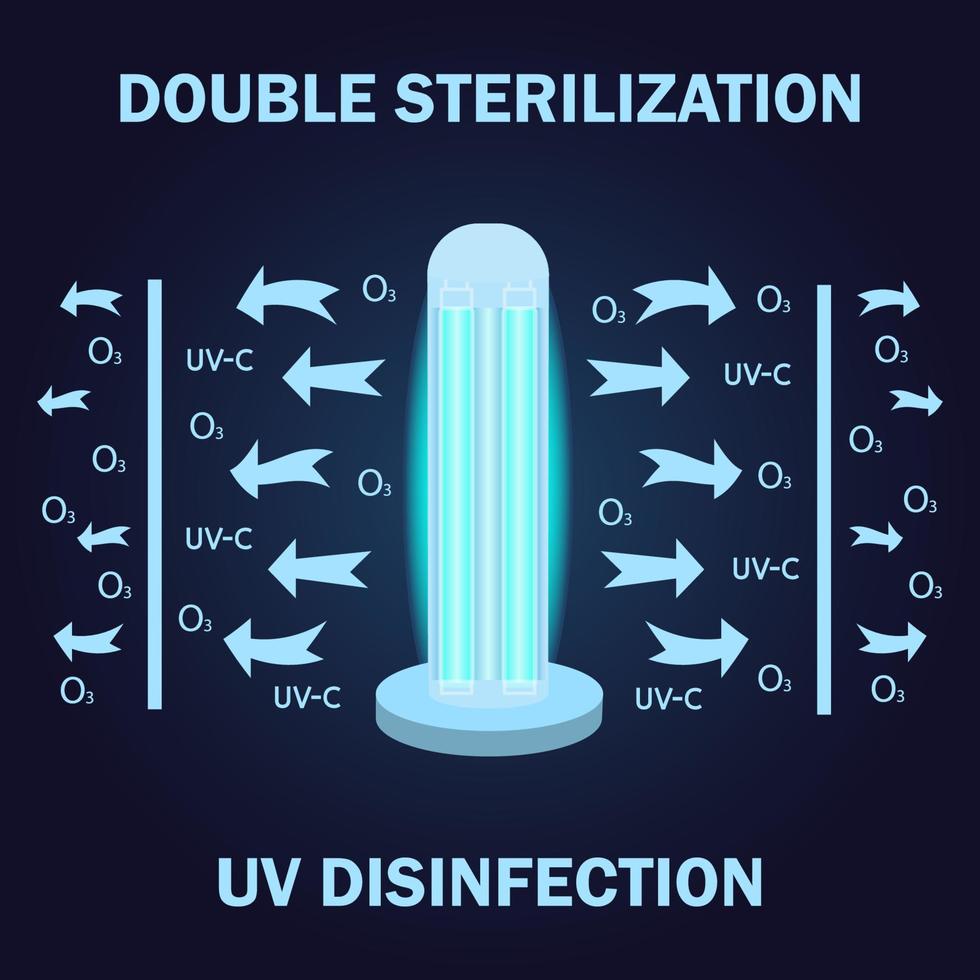Revealing the Advantages of UV Disinfection: Making Sure Disinfected and tidy Spaces
In the age of enhanced awareness bordering health and sanitation, the relevance of efficient disinfection techniques can not be overemphasized. While conventional cleansing techniques have long been trusted, improvements in innovation have actually presented an ingenious solution that ensures clean and sanitized rooms: UV sanitation. By using the power of ultraviolet light, this approach has actually gained recognition for its capacity to get rid of unsafe microorganisms and supply a complete sanitization procedure. Nonetheless, the benefits of UV disinfection expand much past its efficacy. This conversation will check out the scientific research behind UV disinfection, its efficiency on numerous pathogens, its applications in different settings, and the advantages it holds over standard techniques. In addition, we will look into the safety and security considerations that need to be taken right into account when implementing UV disinfection. Prepare to uncover a new dimension of tidiness and find the untapped potential of UV disinfection.

The Science Behind UV Sanitation
UV sanitation is a scientifically tried and tested technique that makes use of ultraviolet light to get rid of hazardous bacteria from surface areas and water. The scientific research behind UV disinfection depends on the capacity of UV-C light to harm the DNA and RNA of microorganisms, rendering them not able to reproduce and causing their eventual fatality. UV-C light drops within the wavelength range of 200 to 280 nanometers, which is very effective in ruining bacteria, viruses, and various other virus.
When exposed to UV-C light, the genetic material of bacteria takes in the power from the light, leading to the formation of thymine dimers. These dimers interrupt the regular duplication and transcription processes of the microbes, inhibiting their capability to replicate and endure (uv surface disinfection). The DNA and RNA damage triggered by UV-C light is deadly to the microbes, making UV sanitation a dependable and reliable technique for killing a vast array of pathogens
UV sanitation is particularly beneficial in environments where typical chemical anti-bacterials may be inadequate or unwise. It is a non-chemical approach that does not leave any kind of deposits or hazardous byproducts, making it safe for use in food processing, medical care facilities, water therapy plants, and various other sectors. UV sanitation is environmentally pleasant, as it does not contribute to the development of antibiotic-resistant microorganisms or other damaging pollutants.
Efficiency of UV Disinfection on Virus
The effectiveness of UV sanitation in removing microorganisms has been thoroughly examined and shown in numerous clinical research studies. UV radiation has the ability to suspend a large range of microorganisms, including infections, bacteria, and fungis, by harming their DNA or RNA. This prevents them from duplicating and causing infections.
One research published in the American Journal of Infection Control found that UV disinfection was efficient in minimizing the visibility of numerous drug-resistant microorganisms in healthcare facility spaces. Another research study conducted by the National Institute for Occupational Safety and security and Health and wellness showed that UV disinfection was able to eliminate 99.9% of the flu infection on surfaces.
UV disinfection has additionally revealed pledge in combating the spread of healthcare-associated infections (HAIs) According to a research released in The Lancet, making use of UV-C light in enhancement to typical cleaning procedures substantially reduced the occurrence of HAIs in a medical facility setting.
Moreover, UV sanitation has actually proven to be efficient against emerging virus, such as the extreme intense respiratory syndrome coronavirus 2 (SARS-CoV-2), which causes COVID-19. A study carried out by the National Emerging Contagious Illness Laboratories showed that UV-C light can inactivate the infection on surface areas within seconds.
Applications of UV Disinfection in Different Setups
With its proven performance in getting rid of pathogens, UV sanitation has found applications in a variety of settings. One of the most typical locations where UV disinfection is utilized is in health care centers. UV technology is used to sanitize client rooms, running areas, and other high-touch surfaces, decreasing the risk of healthcare-associated infections. In addition, UV sanitation is additionally being carried out in food handling plants and restaurants to make sure the safety of food and stop the spread of foodborne illnesses. UV disinfection is likewise useful in water therapy plants, where it is used to kill harmful microbes and offer safe alcohol consumption water.
One more vital application of UV disinfection impends filtration industry. UV air cleansers are made use of in residential, business, and commercial setups to remove air-borne germs, infections, and mold spores. This technology is especially helpful in atmospheres where individuals are more vulnerable to breathing infections, such as healthcare facilities, institutions, and office complex.
Furthermore, UV sanitation is significantly being used in mass transit systems, such as buses and trains, to keep clean and sterilized spaces for travelers. UV light is utilized to sanitize surfaces and air inside the vehicles, reducing the risk of spreading out infectious conditions.
Advantages of UV Sanitation Over Standard Approaches
In comparison to conventional approaches, UV disinfection uses an array of unique advantages that make it a better selection in various industries and settings. One substantial benefit is its performance versus a vast range of bacteria, consisting of fungi, germs, and viruses. Unlike chemical anti-bacterials that might have limited efficacy versus specific virus, UV sanitation is a non-selective process that can eliminate or suspend a wide spectrum of harmful microorganisms.
Another benefit of UV disinfection is its capacity to give effective and fast disinfection. Conventional sanitation techniques commonly require longer call times or numerous actions to achieve the desired level of sanitation. On the other hand, UV light can provide continuous and immediate sanitation, reducing downtime and enhancing performance in different applications.
UV sanitation likewise provides a secure and eco-friendly alternative to standard disinfection methods. uv surface disinfection. Unlike chemical agents, UV light does not leave any kind of damaging residues or byproducts, making it ideal for use in sensitive atmospheres such as food handling facilities, medical care setups, and water treatment plants
In addition, UV sanitation is a cost-effective remedy over time. While the in advance financial investment for UV sanitation systems might be greater than typical approaches, the operational expenses are generally reduced. UV lights have a lengthy life-span and call for very little maintenance, leading to lowered labor and replacement costs.
Security Factors To Consider for UV Sanitation
Thinking about the potential dangers associated with UV sanitation, it is vital to address the safety and security considerations associated with applying this modern technology. UV sanitation utilizes ultraviolet light to kill or inactivate bacteria, making it a reliable method for sanitizing various surface areas and items. Nevertheless, it is crucial to recognize that UV radiation can additionally position dangers to human health Our site if proper safety measures are not complied with.
Firstly, straight exposure to UV radiation can create injury to the skin and eyes. Extended direct exposure can lead to sunburn, skin damage, and also a raised danger of establishing skin cancer cells. As a result, it is vital to make sure that UV sanitation systems are appropriately enclosed and outfitted with security attributes such as automated shut-off systems or activity sensors dig this to avoid unintended direct exposure.

In addition, appropriate training and education are essential for those accountable for running UV sanitation systems. They must understand the potential hazards, recognize the safety methods, and understand exactly how to manage and keep the devices properly.
Conclusion
To conclude, UV sanitation supplies many benefits in ensuring tidy and disinfected spaces. Its effectiveness in eliminating pathogens has actually been shown with scientific research study. UV disinfection can be used in various settings, consisting of healthcare facilities, food processing plants, and water treatment systems. Contrasted to typical techniques, UV disinfection has benefits such as faster sanitation times, minimal chemical usage, and no harmful results. Safety and security factors to consider have to be taken right into account to avoid potential risks connected with UV direct exposure.
UV sanitation is a scientifically tested method that uses ultraviolet light to eliminate damaging microbes from surfaces and water. The DNA and RNA damage caused by UV-C light is lethal to the microbes, making UV disinfection a effective and reputable technique for killing a large variety of microorganisms.
Another advantage of UV sanitation is its capacity to supply efficient and rapid sanitation. UV sanitation uses ultraviolet light to kill or inactivate microorganisms, making it an effective approach for disinfecting numerous surface areas and items. Contrasted to typical approaches, UV disinfection has advantages such as faster disinfection times, very little chemical use, and no dangerous results.